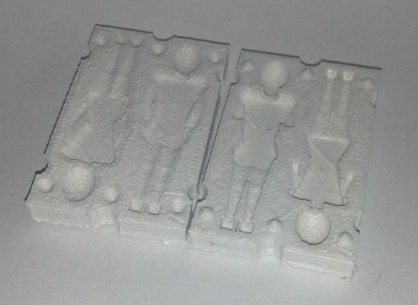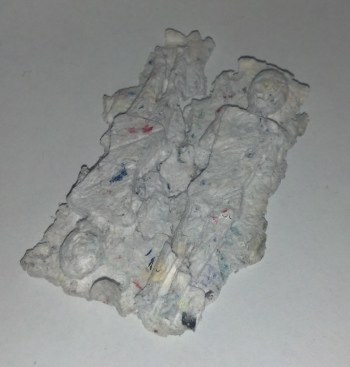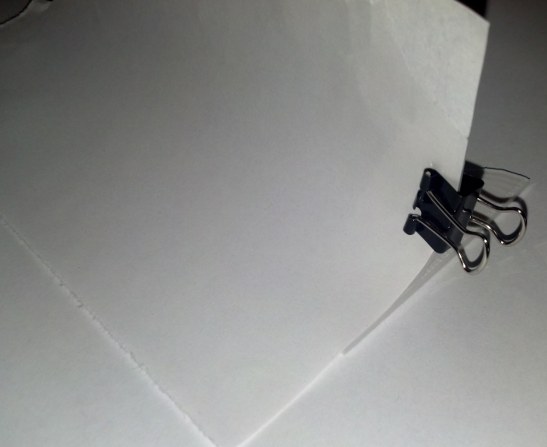My daughter and I have been working on a project to create paper mache fairies and fairy furniture.1
But first, I can’t help showing off this nifty 3D printable photographic background stand I designed. Inspired by some other designs on Thingiverse, my first draft worked exactly as I was hoping it would. Okay, back to the paper mache.

Printed fairy mold (about 2″ long)
I designed two tiny human-ish figures in OpenSCAD, subtracted them from a block, and sliced the block in half to create a two-piece mold for what we were hoping would be tiny paper mache fairies. I was pretty sure the tiny figures wouldn’t come out well in the printed plastic mold and that the mold wouldn’t work well with the paper mache. However, my daughter really wanted to try to make fairies of this size (about 2″ tall) – so we gave it a shot.

Cast paper mache fairies
I squeezed the paper pulp so it wasn’t sopping wet, added a liberal amount of white glue, packed the printed mold with the mixture, and put a rubber band around it to keep it together. I gave it a few days, then pulled the mold apart. I wasn’t able to add much of the mixture into the upper half, so the reverse side didn’t seem to leave much of an impression. Once it was dry, the dried paper mache stuck to the bottom half of the mold so well it tore in several places as I got it out.
In any case, here are the lessons I’ve learned:
- The fairy bodies are somewhat angular – which I think made them difficult to remove from the mold. I would have made them more rounded in the first place, but there were already a lot of spheres and cylinders in the design which were causing some pretty long OpenSCAD render times.
- Larger molded objects would probably work better.
- The mold would probably release the cast object if I made the interior smoother – either with sanding or acetone.
- A release agent would probably help. Maybe petroleum jelly on the inside, perhaps plastic wrap?
- I should have sanded the tops of the mold halves – so they would mesh better. This might have allowed the paper mache to be pressed better into the top part of the mold.
- It may help to add something to the paper mache mixture to make it stronger. My thought is pieces of frayed yarn or pieces of a cotton ball. This may give it more strength and flexibility.
- It’s hard to tell if it would matter, but more glue might have helped.
- I think it would have helped to create the mold in multiple pieces – similar to this Chris K. Palmer early Thingiverse chocolate mold.
- I’ll leave it to your imagination to decide who chose the subject matter [↩]

